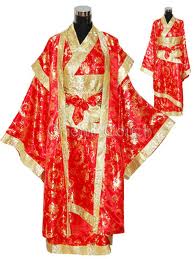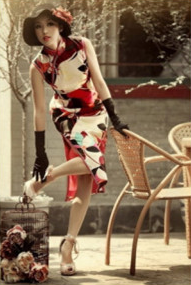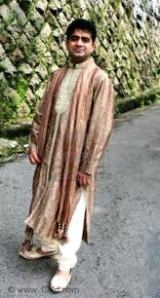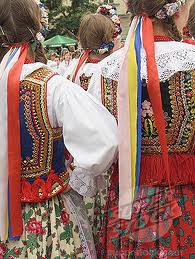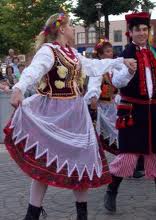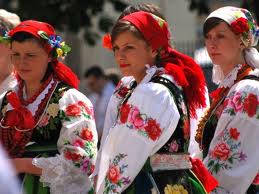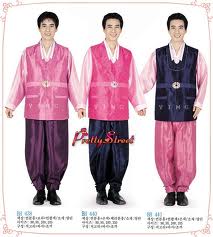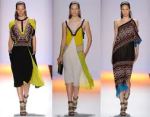The 18th Century: Marie Antoinette and the reign of fashion
Although fashion had already been in existence for several centuries, the starting point for fashion as we understand it today originated with the great Marie Antoinette and her court. During the reign of her husband Louis XVI, French fashion enjoyed one of the greatest successes of all time. It was at this point when fashion ceased to be a functional element – since up until then it had served to indicate one’s social class – and it began to attract the attention of royalty. The clothing of the period was quite beautiful but impractical: the dresses could weigh up to several kilos, the elaborate hairstyles and ornamentation could be up to a meter tall, and corsets cinched the waist in such a way that during the summer months women were apt to faint. The men, meanwhile, wore stockings, high-heeled shoes and wigs with cascading ringlets, which gave them a rather flamboyant look. It was the era of luxury, excess, and waste, and, in court, everyone imitated what Marie Antoinette wore. It could be said that she was a trendsetter; however, the splendor of her reign and her clothes did not last long.
The First Half of the 19th Century: Georges Brummell, the first dandy
Until now, men had occupied a secondary role in the world of fashion. Women, who had a great deal of leisure time since they took a back seat to men when it came to work life, devoted their time to pampering themselves and spending their husbands’ money on dresses and headdresses (which was perfect in their minds, as it left no doubt about their social status).
Although it has often been said that Brummell was a young aristocrat with a penchant for luxury and a passion for art, the reality was quite different. Brummell was a very humble young man who made the most of the circumstances in order to benefit himself. How? Well, with his unfailingly spotless, perfect image. He was quite the gentleman and he tended to even the smallest detail of his appearance, thus managing to gain access to the most exclusive social circles.
Second half of the 19th Century: Charles Frederic Worth and haute couture
Beginning in 1857, the world of fashion changed dramatically and began to develop into the world as we know it today. Up until this time, the couturiers traveled to their clients’ homes in order to make custom garments, but Worth decided to change things around by making his clientele come to his maison to view the collections that he created annually. He was the first to organize a show at his fashion house, the first to sew on a label with his name, and the first to understand fashion as an important social element.
The 20th Century: The new era of fashion
From the turn of the century through the 50s
In 1906 a significant change came about in the fashion world. Women were considered objects, and they had to endure the hardship and inconvenience of impractical clothing. In this period, a movement for the liberation of the female body began, led by Paul Poiret, a designer of the time who was in favor of abandoning the use of the corset; however, his idea never fully caught on after society was rocked by the outbreak of World War I. Women had to enter the workforce while men served on the warfront, so they adopted men’s clothing for its comfort. They wore straight dresses that completely hid their feminine features to achieve, in a way, the position of men in society.
During the postwar era this style of dress continued, although by 1925, hemlines began creeping up and much more feminine silhouettes were being worn. From the 30s until the start of World War II, women shone in all their glory. Hollywood divas became the new muses. The corset fell into disuse and women began to reveal their natural curves thanks to the skill of Madeleine Vionnet who, with her bias cut, created filmy dresses that clung to a woman’s body without being too tight. Another one of the great figures of the era was Gabrielle “Coco” Chanel who, with her particular worldview, went on to revolutionize women’s clothing preserving, above all, comfort and elegance as hallmarks of style.
When it finally seemed as though society was back on track, World War II broke out. Those years were characterized by completely functional garments that had abandoned all traces of style.
The 50s: the battle of the Titans
A period of sobriety continued after the war as both the country’s spirit and industry gradually recovered. However, this time the recovery moved along much faster thanks to the extremely well-known designer Christian Dior. In 1947 he organized a runway show at his fashion house where he presented the New Look silhouette. This silhouette presented the woman as ultra-feminine, with suits and dresses that emphasized the bust, cinched the waist and featured mid-length funnel skirts: 100% sensuality and elegance. The Dior woman was born, one who always puts on a brave face. However, given the world’s unstable situation at the time, many criticized this new aesthetic. One of Dior’s biggest detractors was Coco Chanel. She had retired prior to the war, but with the success of Dior, the French grand dame rose from the ashes. This set up a struggle – albeit a respectful one – between the designs of Dior and Chanel. Coco was not opposed to Dior for political reasons, rather she simply believed that women had been subjected to the rigors of fashion for too long. According to Chanel, Dior bound women with his fashions; therefore, she felt it necessary to establish a new code in the female wardrobe: femininity and elegance without the need to balance in stiletto heels. Chanel became an icon that represented classic, elegant and comfortable fashion, while Dior was the champion of sensual, elegant fashion that was more difficult to wear.
The 60s and 70s: “I’m a rebel”
Rebelliousness was the order of the day as hemlines shortened until we arrived at the miniskirt and the great Yves Saint Laurent introduced pants to the female wardrobe. Prêt-à-porter (ready-to-wear) was born as a counterpoint to haute couture, which had not evolved with society but remained as a symbol of luxury. Once again, Yves Saint Laurent was the architect of this renewal in women’s fashion, joined this time by “Kaiser Karl” Lagerfeld. Inspiration was varied. While the women of the 60s displayed a more childlike aesthetic with the model Twiggy as the standard, the70s were years of exuberance and sensuality with Brigitte Bardot and Ursula Andrews as icons of beauty.
The 80s and 90s: Body worship begins
During these two decades fashion took yet another turn. It ceased to be a political tool, and it became instead an aesthetic element. In the 80s men and women took care of their bodies and their appearance. It was the era of yuppies, shoulder pads and “the working woman,” during which women demanded even higher stilettos. Everyone wanted to be a “10” to squeeze into those Calvin Klein jeans and to look as fantastic as Brooke Shields in the ads. It was the supermodel era. Claudia, Naomi, Cindy, Christie and Amber were Versace’s muses, an icon of fashion understood as beauty.
From the 90s to the year 2000: What’s ugly is pretty
At the end of the 80s an anti-fashion movement began to take shape, influenced by designs arriving from Japan and the Antwerp school. These designers defended fashion as a means of expression, and they believed that the demands of beauty imposed by society only impoverished the artistic creation that could be achieved through fashion. Rei Kawakubo, with the label Comme des Garçons, and Yohji Yamamoto, represented the alternative undercurrent in which black, deconstructed garments and exaggerated forms were the hallmarks of the style.
The 21st century: The era of the gods and luxury
Karl Lagerfeld (Chanel), Marc Jacobs (Louis Vuitton), John Galliano (Dior), Nicolas Ghesquière (Balenciaga), Stefano Pilatti (Yves Saint Laurent) and Alber Elbaz (Lanvin) are just some of the geniuses who hold the position of creative director at these renowned houses of style. Our era is the era of luxury, led by a group of young talent (with the exception of some figures like Lagerfeld, Gaultier and McQueen) that knows the trends better than anyone, has a social circle filled with celebrities and understands what influences our world: exclusivity and astronomical prices.
We failed to mention some very important figures and labels that have marked a turning point in the fashion world, but in this summary, broadly speaking, you can find the main facts that have brought life, form and history to fashion.








